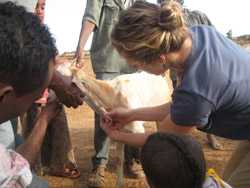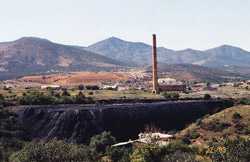Success Stories in Environmental Health

Learn more about how CDC’s National Center for Environmental Health (NCEH) and the Agency for Toxic Substances and Disease Registry (ATSDR) protect and promote environmental health across the United States.
Your environment is everything around you—the air you breathe, the water you drink, the places where your food is grown or prepared, your workplace, and your home. When your environment is safe and healthy, you are more likely to stay healthy. But when your environment exposes you to dangerous events or harmful amounts of toxic substances, your health can be affected. In fact, 25% of all diseases worldwide are caused by something harmful in the environment.
How can my environment affect my health?
Here are some actual examples of the many ways your environment can affect your health.
- Your drinking water well is contaminated by benzene from industrial activities near your home.
- Your seven-year-old child suffers from severe asthma, and you don’t know how to help him.
- Your child’s school is contaminated by mercury found in a science lab.
- You are suffering from depression following a man-made disaster near your community.

NCEH epidemiologists investigating liver disease in Ethiopia take blood sample from a goat.

ATSDR joins EPA, Arizona health and environment agencies and the University of Arizona to educate community members about arsenic and lead exposure from the Iron King Mine and Humboldt Smelter Site in Dewey-Humboldt, AZ. Credit: Leah Butler (EPA) via Wikimedia Commons
The National Center for Environmental Health (NCEH), part of the Centers for Disease Control and Prevention (CDC), and the Agency for Toxic Substances and Disease Registry (ATSDR), a sister agency to the CDC, are committed to keeping people safe from environmental hazards. Each agency works to
- promote healthy environments,
- respond to natural and man-made disasters,
- support public health workers,
- educate communities, and
- provide scientific knowledge.
How do NCEH and ATSDR work together to promote environmental health?
Although NCEH and ATSDR staff frequently work together on common issues, each has a different focus and different types of activities.
NCEH works to prevent illness, disability, and death from interactions between people and the environment. The center conducts research; tracks health problems related to the environment; and supports local, state, tribal and national health agencies. NCEH also combats illnesses associated with environmental hazards such as air pollution, lead, contaminated food and water, and radiation.
ATSDR focuses on protecting the public from exposures to toxic substances. The agency investigates hazards in communities by collecting and analyzing information on environmental exposures and health. It provides recommendations to communities and industries to limit or prevent exposure to hazardous substances. ATSDR also provides scientific expertise on toxic substances and their effects on health and collects information about people who have the same health condition or disease.
Whatever the activity, NCEH and ATSDR staff members focus on making a real difference in people’s lives. The “Your Health – Your Environment” blog and “Sharing Our Stories” describe our successes in protecting and improving people’s health across the United States. For example, you can learn how NCEH works to prevent foodborne illness outbreaks in restaurants. Or you can read about ATSDR’s National Amyotrophic Lateral Sclerosis Registry (ALS Registry), the first and only population-based estimate of ALS prevalence and incidence for the United States. Click on the links below to read these stories and more accounts of the work of NCEH and ATSDR. And keep checking back for more news about how these agencies protect people from harm in the environment.
- Page last reviewed: July 10, 2017
- Page last updated: July 10, 2017
- Content source:
- National Center for Environmental Health, Agency for Toxic Substances and Disease Registry
- Page maintained by: Office of the Associate Director for Communication, Digital Media Branch, Division of Public Affairs




 ShareCompartir
ShareCompartir